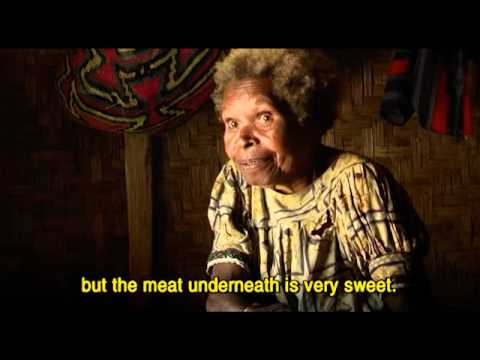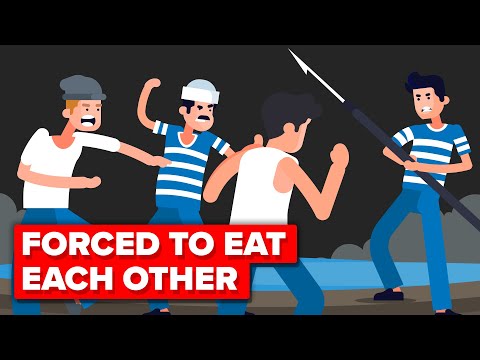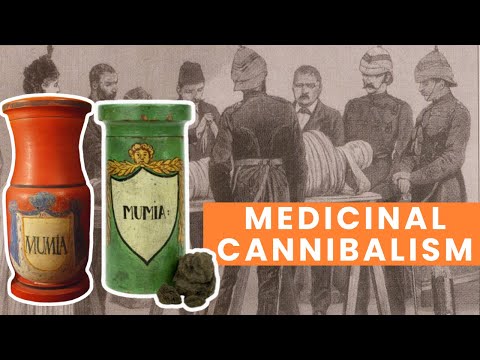Before modern killers started going Hannibal Lecter for the shock and fame, and possibly the taste, human society spent thousands of years playing hosts to whole civilizations that ate people. And not just “ate.” It gets much worse than simply “ate.” This list gathers ten of the worst cannibals in history, the ones that would make Dahmer go vegan.
10 The Nazino Prisoners
Joseph Stalin’s rule over the Soviet Union led to rampant mass suffering and several almost-unspeakable tragedies. One of the absolute darkest and regrettable of these incidents has come to be known as “The Nazino tragedy,” which is the first of three Stalin-led cannibalistic tragedies on this list. Watch this video on YouTube The incident started with the forced deportation and relocation of 6,000 “undesirable” Soviet citizens to the small island of Nazino. They left the political prisoners on the island with orders to construct themselves a new, isolated home. But, they had no food aside from flour. What transpired on the island is best left unsaid here, but after thirteen weeks of unimaginable cruelty—yes, including a tremendous amount of cannibalism—only around 2,000 of the original 6,000 prisoners were left alive.
9 Liver-Eating Johnson
The man’s name should be your first clue. Liver-Eating Johnson indeed ate human livers, by traditional accounts over 300 of them. Johnson was a 19th-century mountain man who had become a feared and even legendary figure of revenge and, yes, of cannibalism by the end of his life. At one point, Johnson was married to a Native American woman from the Salish tribe. When a young brave from the Crow tribe killed the Salish woman, Johnson went on an unprecedented spree of violence and mayhem. He spent years hunting Crow warriors, killing over 300. To put a cherry on his vengeance sundae, Johnson scalped the Crow before killing them and then removed and ate their livers.
8 German Prisoners
Moving on to the second of the Stalin-led cannibalism incidents, we have the mistreatment of German prisoners of war in World War II. Though it’s clear that the Soviet Union was unkind to prisoners across the board, the fate of German P.O.W.s after the Battle of Stalingrad may illustrate conditions in the simplest terms. Watch this video on YouTube After German soldiers lost the battle, around 91,000 were taken captive by Soviet forces. Two years later, when the war concluded, and mass prisoner exchanges were arranged, less than 5,000 of those German soldiers were still alive. Most spent those years in Soviet gulags or labor camps and were fed so little that cannibalism became an unfortunate fact of life. Despite their suffering, these were Nazi soldiers, and the guy they worked for wasn’t an overly kind man. About the German general’s decision to surrender instead of killing himself and his troops, Hitler was quoted as saying that “(The Nazi general) could have freed himself from all sorrow and ascended into eternity and national immortality, but he prefers to go to Moscow.”
7 The Fore People
The disease most associated with cannibalism is the neurodegenerative prion disease kuru, also known as laughing sickness. The word comes from the Fore language because, in a sense, the Fore people of Papua New Guinea invented it. The Fore people’s practice of ritualistic cannibalism, and the kuru epidemic it caused, brought kuru to worldwide fame. It was long a custom in Fore culture to cook and eat the flesh of deceased family members. The idea was to open the body and remove the flesh, allowing the deceased relative’s spirit final freedom from the physical. The side effect of this was easy transmission for the kuru-causing prion (a misfolded protein) from the dead to the living. During one epidemic between 1957 and 1960, around 1,000 Fore people died due to cannibalism-transmitted kuru.
6 Every Hungry Sailor
By now, stories of stranded sailors resorting to cannibalism are almost old news. It seems that there are more famous stories about desperate sailors consuming each other than there are of all other cannibalistic reports combined. In fact, the act of drawing lots to choose which sailor they’ll eat, when it is needed, has long been considered one of the most serious “Customs of the Sea.” The unofficial rules that sailors swear to when they commit to maritime life. Watch this video on YouTube Probably the most famous example is the whaling ship Essex of Nantucket, which was rammed by a sperm whale and sunk, leaving its crew aboard small whaleboats. Seven crew members were eaten, one by drawing lots, but at least Herman Melville got a book from it.
5 Soviet Ukrainians
And now for the last and worst of everyone’s least favorite movies, the “Stalin Cannibalism” trilogy. From 1932 to 1933, Soviet Ukraine experienced the worst famine in the country’s history. As a result, five to ten million Ukrainians died, an unknown portion of which became food for their starving neighbors. The true tragedy of the Holodomor, as it came to be known, is that it did occur due to blight, disease, catastrophic weather, or any other natural cause of food shortage. The Holodomor was engineered by the Soviet Union, carried out through targeted law after targeted law, and committed against its own people. Radio Free Europe relays the story of one of the Holodomor’s survivors, Fedir Burtianski, as he recalls one of his many grizzly experiences: “He avoided buying meat from a vendor because he suspected it was human flesh. When the authorities heard about the incident, he was forced to attend the trial of (the vendor) and his two sons, who were suspected of murdering people for food. Burtianski says during the trial, one of the sons admitted in chilling terms to eating the flesh of his own mother, who had died of starvation. He said, ‘Thank you to Father Stalin for depriving us of food. Our mother died of hunger and we ate her, our own dead mother. And after our mother, we did not take pity on anyone. We would not have spared Stalin himself.’”
4 Suiyang’s Soldiers
The Battle of Suiyang was one of the major battles of China’s bloody 8th-century civil war, the An Lushan Rebellion. Suiyang may be the war’s most notorious battle, mainly because it ended with the city’s soldiers killing and eating some 20,000–30,000 civilians. Watch this video on YouTube The conflict consisted of a prolonged siege of the city of Suiyang by the armies of general Yin Ziqi. The siege was highly successful, and what remained of Suiyang’s troops quickly found themselves without food. As one historian writes, “After the city was besieged for a long time, at the beginning, the horses were eaten. After horses ran out, they turned to the women, the old, and the young. Thirty thousand people in total were eaten.” In a twisted silver lining, the cannibalism helped Suiyang hold out long enough to give ally cities the necessary time to prepare their counterattack. This ultimately turned the tide of the war in (what would have been) Suiyang’s favor.
3 Poor Europeans
If you know your world history, you’ll know that Europe in the 1300s was a bit of a hellscape. Between its mini Ice Age, the Black Plague, the mysterious plague that wiped out livestock, the many wars—both civil and international (including the War of the Roses and the Hundred Years War, among others)—and the dozens of peasant uprisings, the century was not a fun one. But its lowest point came amid the Great Famine of 1315. By now, you might be able to venture a guess as to what happened. Watch this video on YouTube Starting in 1315, a period of unseasonable cold and extreme rainfall made crops and the livestock that depends on crops for food die in droves all across Europe. This led to one of the worst famines in history, which meant it was time to put on the human bibs. One account from city officials in Bristol, England, wrote that “the living could scarce suffice to bury the dead. Horseflesh and dog flesh was accounted good meat, and some eat[sic] their own Children. The thieves that were in prison did pluck and tear in pieces, such as (those that) were newly put into prison, and (the thieves) devoured them half alive.”
2 Rich Europeans
Though it is somehow not common knowledge, it is nonetheless true that wealthy Europeans used cannibalism as medicine for hundreds of years. In particular, pieces of stolen ground mummies were used to treat everything from headaches to epilepsy. King Charles II of England, for example, was fond of a drink he dubbed “The King’s Drops,” which was made by stirring powdered skull into alcohol. For those without a king’s income, the option was open to stand at the sides of executions and buy cups of the recently deceased’s blood, used to gain their lost vitality. Most of these practices went out of style by the 19th century. However, the aforementioned mummy consumption lasted at least as long as the early 20th century.
1 Neanderthals
The idea that Neanderthals practiced cannibalism has amassed an impressive amount of supporting evidence in recent years. For example, archaeologists have unearthed multiple examples of Neanderthal bones that show signs of defleshing, indicating that individuals used tools to remove the meat from the bones purposefully. But more important than simple cannibalism is the recent hypothesis that Neanderthals may have eaten so much human meat that it led to their extinction. It’s clear that Cro-Magnons outcompeted Neanderthals in some way, as most surviving humans are about 96-100% Cro-Magnon and only 0-4% Neanderthal. A new hypothesis as to why Cro-Magnons so thoroughly bested the Neanderthals is based on our shared cannibalism. It suggests that the two groups may have been cannibals together—and often. They would both then face the same deadly prion diseases that inherently come with cannibalism, but only Cro-Magnons possessed a gene that conferred them enough resistance to the diseases to survive. If that was the case, then this entry might be better titled “Everyone’s Ancestors.”
























